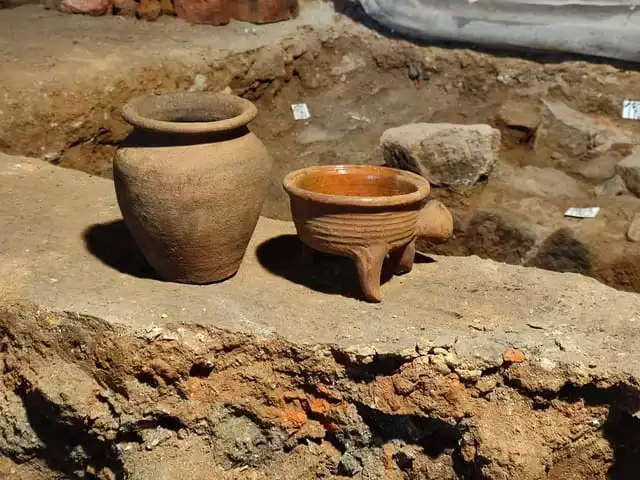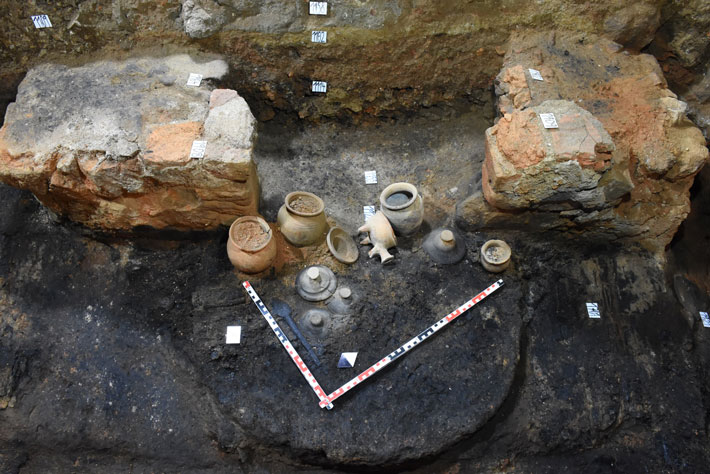A well-preserved kitchen from the early fifteenth century has been discovered near the ancient town walls of Nov Jin, in the Moravian-Silesian area of the eastern Czech Republic.
According to the report of Prague Morning, Pavel Stabrava of the Novojin Museum hypothesizes that a burgher family may have lived here, while wealthier members of the same class were probably likely to have lived closer to the town square.
He stated that the kitchen was a part of a log home with a stone base and had a fireplace and a brick oven. Along with a wooden cooking tool, archaeologists also discovered undamaged pottery pots with their lids.
Burn scars indicate that the home’s occupants may have been forced to evacuate, possibly during a Hussite invasion in 1427.
“Since the house was located near the town walls, this would have been a less wealthy burgher family. The richest burghers would have lived in so-called ‘beer court’ houses around the town square.”
Nov Jin, which was most likely established in the 1300s by the Lords of Kravae, appears to have steadily grown from an older community centered around Star Jin Castle, which guarded the neighboring Amber Road leading from Poland.



Although he acknowledges that not much is known about the medieval settlement, Frantiek Kolá of the National Heritage Institute, which participated in the excavation, claims that the town would have likely been mostly made up of wooden dwellings.
The medieval kitchenware inside the house was found in perfect condition, with the unbroken ceramic pots still containing their original lids. It seems that the items had just been washed and left to dry on the stone hearth. The relics are currently being conserved, and once finished, they will be kept in the Novojin Museum’s depositories.
Mr. Stabrava is hoping that more excavations that are planned around the house’s facade may provide more information about the medieval town and its residents.
“This is because there haven’t been many archaeological excavations in the historical centre of the city. This is one of the first that have been made and we hope that we will be able to continue with excavations as the historic houses in the city get renovated.”
